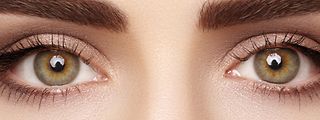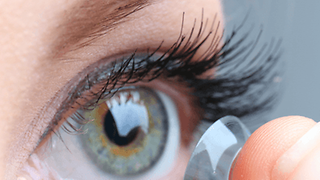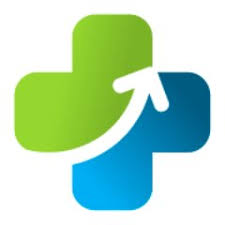We use cookies to give you the best experience. View Cookie Policy.
The relationship between vision and learning
With the new school year just round the corner, is it time for your kids to get an eye test? Find out more as we look at the relationship between vision and learning.

The relationship between vision and learning
Refractive errors
Refractive errors are a group of eye conditions that effect the way that the eye can bend light, with the most common being short-sightedness (myopia) and long-sightedness (hyperopia). Astigmatism is also considered a refractive error and is caused by your eye being a different shape to a perfect sphere.
Sometimes refractive errors can be caused by spherical aberrations. These are imperfections in the shape of the eye that we all have but some more significant cases can impact the quality of eyesight. These conditions can be detected with an eye test and are simple to treat with contact lenses or glasses.
Problems with eye functionality
These problems are to do with the way the eye works. Even if your child does have 20/20 sight, this is no guarantee that their eye functions perfectly. They arise, not because of the shape of the eye, but due to neurological control.
Perceptual vision problems
Whereas the last group of problems involved both your eyes and brain, this group depends purely on the brain. If your child has a perceptual vision problem, they may struggle with understanding exactly what it is they’re seeing. Typical classroom occurrences such as fractions and long words could be hard for them to comprehend, judge their meaning and relate it to the task they’ve been set.
Detecting a problem with your child’s vision
You won’t find out if your child has a perceptual vision problem just from going to an eye test, but it should still be your first port of call. What it might show is that they don’t have a refractive error and need to be tested for other things. They can also show colour blindness, which can also lead to confusion and difficulty at school when it is undetected.
School counsellors or psychologists may be able to help find an optometrist that specialises in children’s vision. They should then be able to help and suggest courses for treating the problem.
To tell whether your child has difficulty with their vision, there are some clear behavioural signs for you and their teacher to pick up on. They may avoid schoolwork that requires being close to the source or persevere with tasks while clearly not being able to understand it. Listen out for them complaining about discomfort or clearly showing trouble staying focused.
Treating vision problems
Treatment can be as simple as corrective lenses, either glasses or contacts, or can involve therapy. The most important thing to remember is to reassure your child and make sure they know that it isn’t anything to do with intelligence. Support and understanding alongside visual therapy is key to keeping them motivated and enjoying school.
3

| 5 MIN READ
Summer's finally here. That means it's time to strip off of those clunky old glasses and go naked. We've got 6 great reasons why you should be choosing contact lenses over glasses this summer.

| 5 MIN READ
Find out if contact lenses are a good option for your child. Olympian Katarina Johnson-Thompson started wearing contact lenses at secondary school and has gone on to excel. Find out more about contact lenses for children on our blog.

| 4 MIN READ
Are your contact lenses comfortable enough? You should always want the best for your eyes and your health, here’s a list of situations which might indicate you need to rethink your contact lenses.
Related Links
- 3 reasons to book yourself an eye test
- Learn about eye conditions and problems with our web tool
- Our guide to short-sightedness
